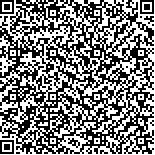|
| 引用本文: | 李冬春,闫喜武,霍忠明,姚 托,孙 欣,张国范.蛤仔(Ruditapes philippinarum)养成期壳长遗传力与育种值估计.海洋与湖沼,2013,44(6):1550-1556. |
| |
|
| |
|
|
| 本文已被:浏览 2201次 下载 2634次 |

码上扫一扫! |
|
|
| 蛤仔(Ruditapes philippinarum)养成期壳长遗传力与育种值估计 |
|
李冬春1, 闫喜武1, 霍忠明2, 姚 托2, 孙 欣1, 张国范3
|
|
1.大连海洋大学水产与生命学院 辽宁省贝类良种繁育工程技术研究中心;2.中国海洋大学;3.中国科学院海洋研究所
|
|
| 摘要: |
| 采用巢式设计构建蛤仔(Ruditapes philippinarum)家系, 通过REML法估计了4种模型下蛤仔养成期90、300和330日龄壳长的遗传力, 对不同模型进行比较并选出最优模型。通过最优模型估计育种值, 并对表型值选择法和育种值选择法进行了比较。结果表明, 移入土池时各家系平均壳长协变量是重要影响因子, 共同环境效应影响较小, 综合分析得出模型ABC为最优模型, 其在90、300和330日龄的遗传力估计值分别为0.264、0.020和0.363, 共同环境系数分别为0.116、0.376和0.098。对表型值选择法和育种值选择法比较的结果表明, 表型值选择法均优于育种值选择法。对家系选择时, 在90、300和330日龄, 家系相同率分别为66.67%、75%和66.67%, 表型值选择的家系平均壳长比育种值选择高7.30%、2.28%和5.81%。按10%的留种率对个体选择时, 在90、300和330日龄, 个体相同率分别为54.17%、59.72%和52.78%, 表型值选择的个体平均壳长比育种值选择分别高27.08%、29.19%和16.27%; 按1%的留种率, 相同率则分别为12.50%、37.50%和37.50%, 表型值选择比育种值选择的平均壳长高39.86%、39.81%和23.23%。 |
| 关键词: 蛤仔 动物模型 遗传力 育种值 |
| DOI:10.11693/hyhz20130400035 |
| 分类号: |
| 基金项目:现代农业产业技术体系建设专项, CARS-48 号。 |
| 附件 |
|
| ESTIMATION OF HERITABILITY AND BREEDING VALUE ON SHELL LENGTH OF MANILA CLAM RUDITAPES PHILIPPINARUMAT SPAT STAGE |
|
LI Dong-Chun1, YAN Xi-Wu1, HUO Zhong-Ming2, YAO Tuo2, SUN Xin1, ZHANG Guo-Fan3
|
|
1.College of Fisheries and Life Science, Dalian Ocean University, Engineering Research Centre of Shellfish Culture and Breeding in Liaoning Province;2.Ocean University of China;3.Institute of Oceanology, Chinese Academy of Sciences
|
| Abstract: |
| Using nest design, we established 8 paternal half-sib families and 24 full-sib families of Manila clam Ruditapes philippinarum. Heritability of shell length at the age of 90, 300, and 330 days was calculated by 4 animal models using REML method and one best of the four models was chosen to predict the breeding value. Selection method based on phenotype or breeding value was compared. The results indicate that the average shell length of each family at the age of 60 as covariate was a main factor to correct the model, while common environment effect was not significantly effective
and the best model was model ABC. The estimated heritability at the age of 90, 300, and 330 using model ABC was 0.264, 0.020, 0.363 and the common environment effect was 0.116, 0.376, 0.098, respectively. Of the two selection methods, the phenotype-based method was better. Among the families selected by two methods at the age of 90, 300, and 330 days, 66.67%, 75%, and 66.67% were the same. In addition, the average shell length of Manila clams selected in phenotype was 7.30%, 2.28%, and 5.81% longer than that selected by breeding value. When choosing 10% of the longest individuals at the age of 90, 300, and 330 days, 54.17%, 59.72%, and 52.78% of selected ones were the same and the average shell length of those selected in phenotype was 27.08%, 29.19%, and 16.27% longer than that by breeding value. When choosing 1% of the longest individuals, 12.50%, 37.50%, and 37.50% of selectedones were the same and the average shell length of those selected in phenotype was 39.86%, 39.81%, and 23.23% longer than that by breeding value. |
| Key words: Ruditapes philippinarum animal model heritability breeding value |
|
|
|
|
|
